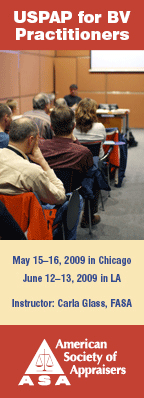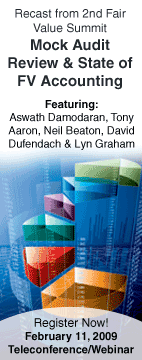
| New Tax Court decision on discounts, embedded capital gains finds taxpayer’s expert more thorough, credible The substantial Litchfield estate—valued at some $26.4 million—consisted primarily of minority stock interests in two closely held, family-owned companies, one that owned Iowa farmland and marketable securities and a second that owned “blue chip” stock and other equity investments. Although the IRS and the estate agreed on the net asset values (NAV) of the estate’s interests, they aggressively disputed the discounts applicable to built-in capital gains taxes, lack of control, and lack of marketability. To value the estate’s 43.1% interest in the first company, for example, the parties’ experts assessed the following:
Estate expert uses more relevant data. Overall, the U.S. Tax Court (Judge Swift) found the taxpayer’s expert more credible and thorough in his analysis. To calculate the discount for embedded capital gains, for instance, this expert (both are unnamed in the opinion) not only used historic asset sales but also talked directly with management about potential future sales. The IRS expert used only historic data. In addition, he failed to account for the assets’ appreciation during the holding period. Another example: The IRS expert did not weight his average discounts for lack of control, but the taxpayer’s did, to account for one company’s more substantial holdings of farmland as compared to marketable securities. The taxpayer’s discounts for lack of marketability were too high, however, and the court reduced these without much discussion to 25% for the first company and 20% for the second. A complete abstract of Estate of Litchfield (January 29, 2009)—including the court’s more comprehensive discussion of the expert’s use of restricted stock studies and private placement studies to calculate the marketability discounts—will appear in the next (April 2009) Business Valuation Update™. The opinion will join the more than 100 federal tax decisions posted to the BVLaw™ database, the single-largest compilation of BV-specific case law available to legal researchers, financial analysts, and attorneys. Note: BVWire™ extends special thanks to Owen Fiore for alerting us to the Litchfield case. Fair Value’s ‘Big Four’ panel offers advice for BV experts Analysts new to the profession should take note of the comments offered by Mike Mard, Anthony Aaron, Stamos Nicholas, Matt Pinson, and Howard Scribner at BVR’s Second Annual Fair Value Summit held in New York City last week. These speakers kicked off their session—Big Four Panel: Get Your Questions Answered BEFORE the Review—with a short list of their pet peeves for BV experts. Their take on issues to avoid: 1) Don’t be a dabbler: These people lack appropriate training as it pertains to business valuation. Consequently, they need to study standards and gain a long-term BV perspective. The panel’s advice: get some grounding in the subject by working with someone who has the appropriate experience. 2) Avoid incompletion: Read relevant documents in their entirety. When Mard queried audience members on how many of them had read FAS 157 in its entirety, surprisingly, the entire room was not able to raise their hands. The panel’s advice: Understand that you don’t have a full understanding unless you’ve done the homework by reading the document’s front end, back end, and minutes. 3) Understand the definition of professional suicide. For instance: new analysts should never do their first 141 on a hedge fund. 4) Do your homework. Always complete the level of work needed to support your analysis and work to understand the nuances about what the standards require. Remember: valuation analysts should not practice accounting. Keep the focus on what’s observable and non-observable. CPE Alert: Catch Aaron, Beaton, Dufendach, Graham, and Damodaran at this week’s Fair Value Summit recast BVR’s Second Annual Fair Value Summit—co-sponsored by the National Association of Certified Valuation Analysts (NACVA), the American Society of Appraisers (ASA), the Foundation of Accounting Education (FAE), and the New York City Chapter of the ASA—offered a host of informative sessions that were well-received by the 200-plus attendees who came to New York City last week. Two hands-down highlights from the meeting—which offered a range of great speakers and presentations—included a session where Neil Beaton, David Dufendach, Tony Aaron, and Lyn Graham exchanged roles and treated attendees to an educational improvisation of a mock Fair Value audit review and Aswath Damodaran’s rousing (and controversial) discussion of Fair Value Accounting: “Visionary Thinking or Oxymoron?”. In a special presentation, BVR, in conjunction with NACVA, will recast these outstanding sessions with a two-hour streaming video between the hours of 6:00am-11:00am (PT) / 9:00am-2:00pm ET on February 11, 2009. You can also call in for the Q&A session with Aaron and Beaton from 11:30am-12:30pm (PT) / 2:30pm -3:30pm (ET) on February 11, 2009. Note: The Q&A session is required to earn CPE credits. To register, or find additional information on this outstanding recast, click here. The Pomeroy Bill: Why business appraisers must respond now By now, most BV experts have heard of the so-called Pomeroy Bill or the “Certain Estate Tax Relief Act of 2009,” H.R. 436, introduced to congress by North Dakota democratic congressional representative Earl Pomeroy on January 9, 2009. According to an interesting assessment of H.R. 436 from Grant Thornton, the bill would “freeze the estate tax regime currently in place for 2009 and make it permanent. The legislation would also “make permanent the current $3.5 million estate tax applicable exclusion amount and the maximum estate tax rate of 45 percent.” The provision would be effective for estates of decedents dying, and gifts made, after Dec. 31, 2009. For gift and estate tax purposes, the bill would also disallow lack-of-marketability discounts for non-business assets when there is a transfer of an interest in an entity that is not publicly traded. A non-business asset is defined as an asset that is not used in the conduct of a trade or business. Specifically, the bill would require that non-business assets be treated as if the transfer of such assets had occurred between the buyer and the seller outside the transfer of the interest in the entity. The interest in the entity would then be valued as if the non-business assets had been included in the entity.” Members of the BV profession are on notice. In the March 2009 issue of the Business Valuation Update™, William Frazier—vice-chairman of the American Society of Appraisers’ Government Relations Committee—writes, “The valuation of fractional interests in family owned investment entities is threatened with extinction. Valuation requirements for family owned operating businesses would also be reduced. If the Pomeroy Bill becomes law, many people who depend upon such appraisals for their livelihoods will be out of work. All professionals who perform these types of assignments as part of their overall practice will see their revenues decline. This is not limited to appraisers. Attorneys, accountants, financial planners and other financial service providers will be affected as well.” You can access a Free Download of the article, Appraisals for Tax Purposes: Collateral Damage of the ‘Pomeroy Bill’ for Frazier’s must-read perspective on H.R. 436. SEC commissioner Aguilar stresses the need for accountability and transparency In a speech given last week in Washington, D.C., Securities and Exchange Commission (SEC) Commissioner Luis Aguilar acknowledged that the “financial services industry is in crisis,” and added that “the driving principle for any regulatory reform is to re-establish accountability and transparency.” Aguilar cited a number of steps that, in his personal opinion, could enhance investors' ability to demand transparency and accountability, including:
A transcript of Aguilar’s speech is available online. The AICPA’s Accounting Standards Executive Committee (AcSEC) seeks comments on its FAS 157 draft issues paper The AcSEC of the American Institute of Certified Public Accountants (AICPA) is seeking informal feedback on this draft issues paper, FASB Statement No. 157 Valuation Considerations for Interests in Alternative Investments. The Institute notes that all comments will be kept strictly confidential and are not posted on the AICPA Web site. E-mailed comments should be sent to ymishkevich@aicpa.org by February 27, 2009. Those wishing to respond by snail mail can send comments to Yelena Mishkevich, Technical Manager, Accounting Standards, AICPA, 1211 Avenue of the Americas, 19th Floor, New York, NY 10036. |
To ensure this email is delivered to your inbox,
please add editor@bvwire.com to your e-mail address book.
We respect your online time and privacy and pledge not to abuse this medium. To unsubscribe to BVWire™ reply to this e-mail with 'REMOVE BVWire' in the subject line or click here.
Copyright © 2009 by Business Valuation Resources, LLC
BVWire™ (ISSN 1933-9364) is published weekly by Business Valuation Resources, LLC
Editorial Staff | Advertise in the BVWire | Copyright Notice
|
|


